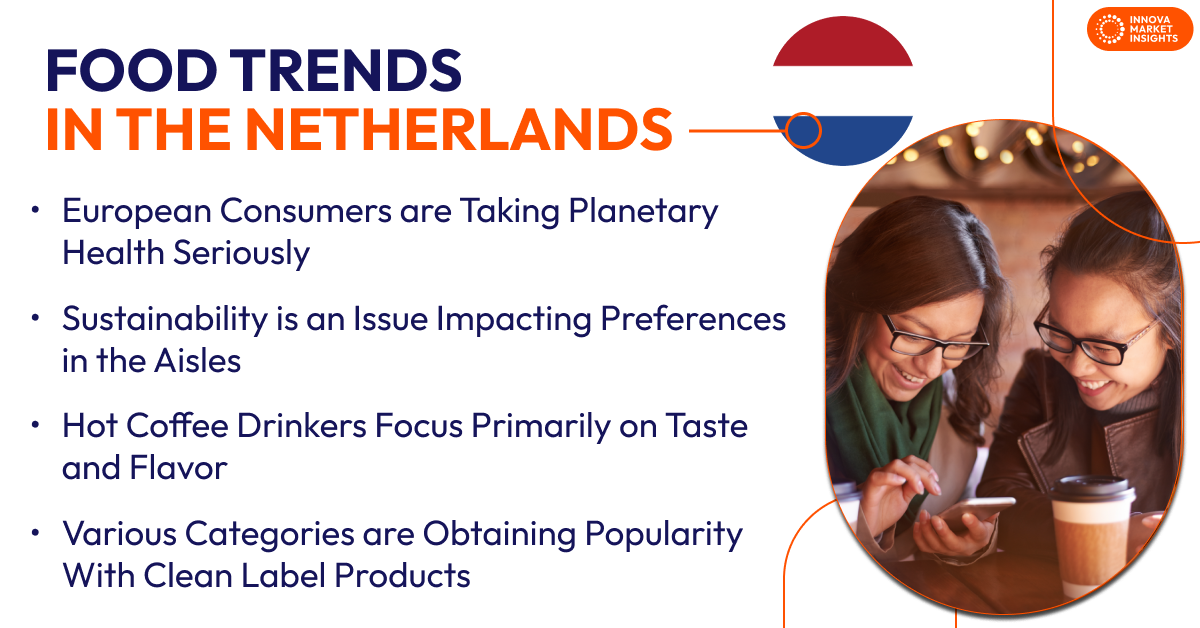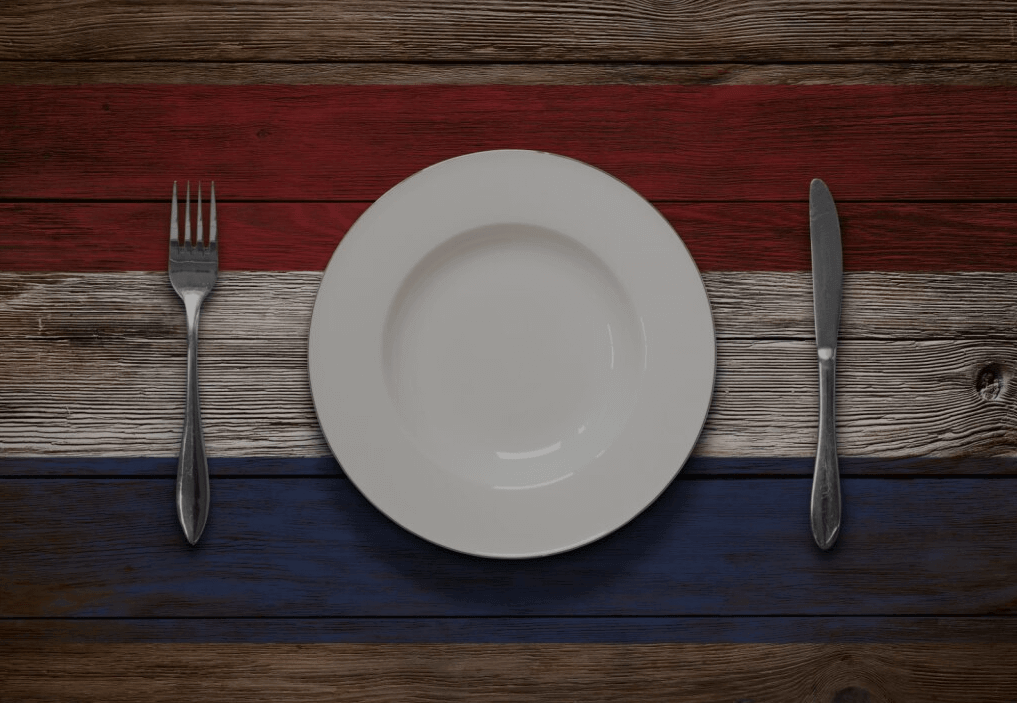August 14, 2025 – In the Netherlands, the food and beverage market being driven by a transformation in category growth across different areas, from everyday staples to snacks and treats. There are challenges and opportunities in all areas, with the main focus being cost, health and convenience for consumers. To understand this better, Innova Market Insights takes a comprehensive view of the current state of the market and provides honest observations based on consumer trends.
Climate Adaptation Strategies Are More in Focus
European consumers are taking planet health seriously, making it their number one concern in many cases. The focus has shifted to climate adaptation strategies, which aim to tackle climate change and the impact it has on health and food security. Finances and health are also top personal issues of concern for many, even in the Netherlands. This is impacting the affordability of health, nutritious food and housing in a volatile climate, leading many to seek security and reassurances at this particular time.
Important Drivers in the Netherlands
Products that contain a clean label are preferred by Dutch consumers, largely due to their composition of real ingredients, without artificial flavors or colors. This aligns with the food trend being seen across categories for freshness and taste. There is also increasing interest for products that have added health benefits or point towards high sources of protein, fiber, and functional ingredients. For many, daily diets need additional nutritional support to contribute to overall wellness, and this is an expectation that is no longer reserved for solely health-focused products.
Sustainability is another issue impacting preferences in the aisles, as demand soars for organic, traditional, and locally sourced food. Quality-sourced and premium offerings that are ethically sourced are also part of the mix. Although these options demand a premium price, they create a cost barrier for the majority of consumers in the Netherlands.
Popularity of Non-Alcoholic Alternatives
In the Netherlands, flavored alcoholic beverages and premixed cocktails are on the rise. In fact, the country’s alcohol purchases account for a larger share of the drink market than the global average. Research suggests that 52% of Dutch consumers purchase alcohol, with beer being the leading choice just ahead of wine, champagne, and spirits. Taste is the key to alcohol purchase choices, according to 57% of those researched. In addition, cost is the second most important factor, also ranking higher than the global average. Premium-quality and traditional claims are becoming more important to consumers of alcoholic beverages, while health, premium, and indulgence claims are driving demand for non-alcoholic, alternative beverages.
Soft Drink Purchases Influenced by Health
Food trends in The Netherlands reveal that in the soft drink category, energy drink consumption has declined by 16%, while iced coffees are on the rise with a 28.9% increase. This highlights key net changes in the category. Healthy choices are seeing a shift too, with bottled water rising in demand, and slightly under-indexing the global average of 67%. Claims of no artificial flavors and colors or reduced sugar are also on the rise, and for bottled water, cost, taste, brand, and convenience are the factors influencing purchasing behavior.
Naturalness and health claims were important factors soft drink choices, which featured many natural and health-beneficial claims. For the Dutch, cost, taste and health were seen as the most important. The health-oriented food trends are further backed by consumer preferences for natural, premium and functional ingredients. Sparkling juices have similar claims that influence their purchase, with around two in five consumers reporting that they prefer functional ingredients and those with fortified vitamins.

Hot Drink Consumers Favor Freshness
For hot tea consumers in the Netherlands, freshness is key, with 54% of consumers prioritizing this attribute. Hot coffee drinkers primarily focused on taste and flavor. However, cost significantly affect both tea and coffee purchases, at 47% and 36%, respectively.
Dutch consumers gravitate toward hot drinks featuring natural ingredients, premium positioning, and caffeine-free formulations. Consumption patterns also reveal distinct preferences throughout the day. For example, tea is more popular at breakfast and mid-afternoon compared to other countries. Coffee dominates breakfast time and mid-morning hours versus global averages.
Freshness and Cost Drive Cereal Choices in the Netherlands
Although Dutch bread and bread product consumption has declined by 8.6% over the last few years, the country’s purchasing penetration of these products currently exceeds the global average. Even during the period of decline, purchasing penetration remained at 81%, which is still higher than the global average. In the Netherlands, flavor leads purchase decisions, followed by freshness and cost. Consumers favor whole grain varieties, high-fiber options, and products with natural ingredients plus local sourcing. Breakfast cereal penetration lags slightly behind global rates, however, Dutch consumers show stronger preferences for taste and convenience. Cost again remains influential for 47% of buyers, exceeding the worldwide average of 44%.
Consumers Favor Fresh and Locally Sourced Dairy
Food trends in the Netherlands show that Dutch dairy penetration has reached 76% versus 71% globally, with cheese, milk drinks, and yogurt all surpassing worldwide rates. The usual factors that influence consumer decisions are cost, freshness, and health considerations, while taste or flavor are key drivers for shelf life priorities. Fundamental claims include natural ingredients, no artificial additives, and local sourcing across categories. Milk and yogurt products are further emphasizing high protein and reduced sugar, while cheese products are more focused on highlighting traditional crafting and low-fat content.
Dutch Staple Food Preferences
Compared to global averages, cost is a higher priority in the Dutch market when buying staple food and beverages. The Netherlands has a higher preference (53%) than the global average (47%) for taste and flavor. The Dutch are also less likely to consider health aspects and convenience compared to their global counterparts. That being said, ready meals have increased in popularity over the last 12 months, along with savory and sweet spreads and seasonings, reflecting a demand for convenience. Taste and flavor drive more than half of consumer preferences, while convenience, freshness, shelf life, and cost are also significant factors shaping current food trends in the Netherlands. Those who consume ready meals prefer natural, traditionally crafted products with reduced-fat and high protein content.
Plant-Based and Special Diets
The Dutch lead in the purchase of meat substitutes, and their consumption of dairy alternatives matches global trends. This demonstrates that consumer demand for taste and flavor remains prominent, with one-third of consumers emphasizing its significance. For consumers of meat substitutes, cost is a decisive factor, though ethical sourcing is still crucial. A quarter of researched consumers actively seek out plant-based and eco-friendly options, and there is a rising demand for products that emphasize high protein or fiber content, as well as reduced-fat.
What’s Next for Food Trends in The Netherlands?
Products and consumer demand will likely lead to improvements in taste, with the inclusion of clean-label and enhanced nutritional profiles. As brands cater to the desire for health-focused innovation in the Dutch food market, health and indulgence will be influential factors. Claims for naturalness, high protein and reduced sugar in dairy, drinks, and snacks are likely to be prevalent. Clean label products are gaining popularity across various categories, and this will continue to be sought after, with attributes like functional ingredients and vitamins pushing them forward.
Consumers are willing to pay for premium products, especially if they’re ethically produced. There is also significant appeal in items promoting “locally sourced,” “organic” and “traditionally-made” claims. This demonstrates that the market will shift toward high-end offerings that embody personal ethics and environmental responsibility. Affordability in categories like staples, dairy, cereals and snacks will be crucial in appealing to various consumer demands.
This article is based on Innova’s Category Growth Drivers in the Netherlands report. This report is available to purchase or with an Innova Reports subscription. Reach out to find out more
